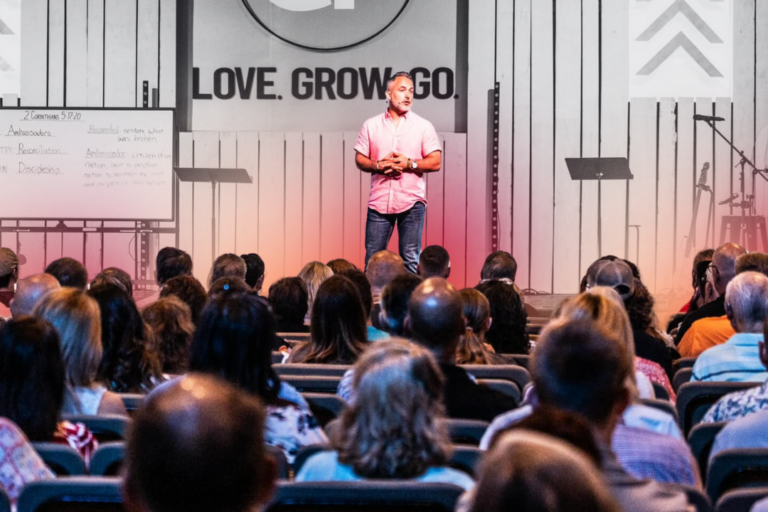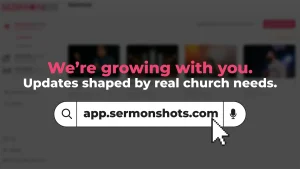In today’s fast-moving world, how can innovative church pastors make their sermons resonate more deeply and reach a broader audience? By tapping into technology, they can transform the traditional sermon experience. Utilizing tools like sermon shots and live streaming not only enhances the delivery but also builds stronger connections within the congregation and beyond. As churchgoers increasingly rely on digital platforms for inspiration and community, adapting sermons with a tech-savvy approach becomes essential. This strategy ensures that messages are not just heard but truly impactful. Whether you’re streaming live services or sharing sermon highlights across social media, there’s no better time to embrace these innovations for spiritual growth and engagement.
Understanding the Role of Technology in Modern Sermons
In today’s world, innovative church pastors have a unique opportunity to use technology to enrich their sermons and engage with their congregation in unprecedented ways. From reaching those unable to physically attend to enhancing the worship experience, technology has become an essential tool for modern ministry. By embracing these innovations, pastors can ensure their messages are both impactful and widely accessible.
The Rise of Digital Congregations
With digital technology, church communities can extend far beyond the walls of the sanctuary. Live streaming services allow members who can’t attend in person to participate from anywhere in the world. These “digital congregations” let churchgoers feel connected even when separated by miles. Social media also plays a crucial role in creating spaces for discussion and engagement throughout the week.
These digital platforms are not just about streaming sermons; they are tools for building community. Pastors can use technology to host virtual prayer groups, Bible studies, and discussions, fostering a sense of belonging and connection among members. This shift not only increases engagement but also enhances the sense of community.
Changing Expectations of Churchgoers
As technology reshapes how we interact with almost every aspect of our lives, churchgoers’ expectations have evolved. Congregants now look for a vibrant experience that goes beyond the traditional sermon. They anticipate engaging content that resonates with their everyday lives and challenges their thinking.
Pastors can rise to this expectation by using sermon shots—concise, impactful clips shared online—to spark interest and encourage reflection throughout the week. These snippets are perfect for social media, where members can easily share and discuss the content with others, broadening the message’s reach.
Innovative Tools for Sermon Enhancement
In an era where technology touches every aspect of our lives, innovative church pastors are redefining what it means to deliver a sermon. By employing various digital tools, they can make sermons more engaging and accessible, ensuring their message spreads far and wide. From sermon shots to interactive Q&A sessions, these tools are helping create a transformative spiritual experience.
Sermon Shots: A New Approach to Sermon Delivery
Sermon shots are like the attention-grabbing trailers of the sermon world. These are short, powerful video clips designed to capture key moments from a sermon and share them on social media platforms. By distilling the essence of a message into a brief, engaging format, innovative church pastors can reach audiences who might otherwise scroll past lengthy videos. These sermon highlights not only pique interest but also encourage viewers to delve deeper by engaging with the full sermon.
Building an Online Community
For innovative church pastors, building an online community goes beyond streaming sermons. It’s about creating a digital space where members feel connected and engaged. When church walls extend into the virtual world, the opportunities for interaction grow, leading to a tighter-knit community.
Creating a Dedicated Church App
Imagine a church app as a digital entrance to your church community. This app can encompass a library of resources like sermon archives, event calendars, and daily devotionals, all in one accessible spot. Congregants can listen to past sermons or engage with a robust collection of educational materials at their convenience.
Utilizing Online Discussion Forums
Online discussion forums can be likened to the digital fellowship hall of the church. These forums provide a space for congregants to discuss sermons, share reflections, and even raise questions that might not be answered during the service.
Hosting Virtual Bible Studies and Prayer Meetings
Technology allows churches to break down geographical barriers and bring members together through virtual Bible studies and prayer meetings. These gatherings provide a welcoming platform for those who might not be able to attend in person due to distance or time constraints.
Challenges and Considerations
As innovative church pastors capitalize on technology to expand their reach and impact, they encounter several challenges that require careful consideration. Embracing digital tools involves more than just adopting new gadgets; it demands a balance between personal connection, technical savvy, and ethical mindfulness.
Technical Difficulties and Solutions
Even the most well-planned digital sermon can hit a snag due to technical hiccups. Whether it’s a livestream that fails or a microphone that doesn’t work, these issues can be disheartening. But rather than fear them, innovative church pastors can prepare solutions.
- Backup Plans: Always have a backup device or platform ready. If the primary streaming service fails, switch to a secondary option.
- Practice Runs: Conduct trial sessions to identify potential glitches and smooth them out before the live sermon.
- Tech Support: Enlist a team or recruit volunteers who are tech-savvy. They can monitor the broadcast and troubleshoot as needed.
Conclusion
In an era where digital connection is key, innovative church pastors have the power to transform spiritual engagement through technology. By integrating tools like sermon shots, live streaming, and church-specific apps, pastors can extend their reach beyond church walls to build vibrant online communities. These digital avenues not only amplify sermon impact but also foster meaningful interactions among congregants.
If you’re ready to deepen your church’s impact, start by exploring these tools. How can you begin integrating one new digital strategy to enhance your sermons? Notice the change not only in reach but in the depth of connections formed. Share your journey and thoughts with us—every step forward can inspire another pastor to embrace this new wave of ministry.





